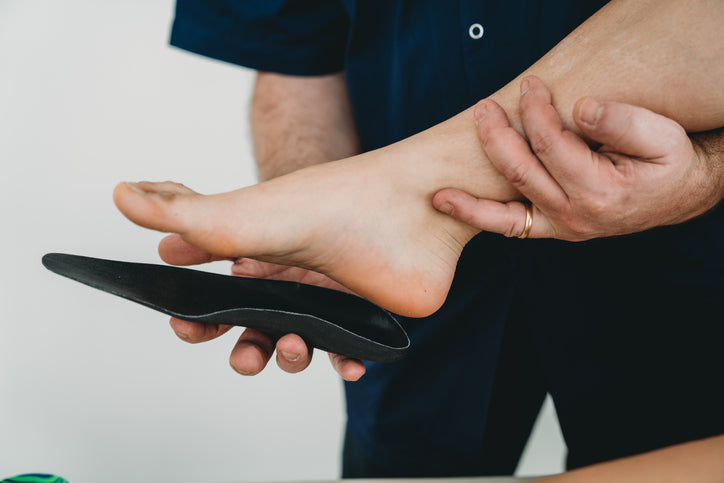Custom Orthotics? Friend or Foe?

When you hear the word “orthotics” what comes to mind?
Medical device?
Beneficial to foot function?
Expensive?
Or, simply an over-prescribed and unneccesary arch support?
When it comes to foot function, one of the most controversial topics in this space is the benefit vs. potential overuse of custom foot orthotics and arch supports in general. To combat some of these myths we spoke to Naboso founder and podiatrist, Dr Emily Splichal
What is a custom orthotic?
As we dive into this potentially controversial topic, let’s start with what a custom orthotic is.
According to Wikipedia orthotics are “an externally applied device used to influence the structural and functional characteristics of the neuromuscular and skeletal system“.
In the case of orthotics, the structure being supported is our foot.
All orthotics are designed with a few key features, all of which provide the support and mechanical control of the foot and ankle.
Feature #1 – Orthotic Shell
Typically made of a rigid or semi-rigid polypropylene, the shell is the most important part of the orthotic. Unique arch placement and foot shape.
Feature #2 – Heel Seat
This is where the heel bone sits. Control can be increased in an orthotic with a deep heel seat that hugs the heel bone to support rear foot motion.
Feature #3 – Rear Foot Posting
After the shell this is often times the most important way to influence foot function and mechanics. Here are two main types of postings – intrinsic and extrinsic.
Both control the foot well but the extrinsic is bulkier making fit in shoes sometimes difficult.
Feature #4 -Top Cover
This is the overlay on the orthotic which can run from the edge of the shell all the way to the tips of the toes depending on patient preference.
Bonus Modifications
There are many other modifications that can be added to custom orthotics depending on the patients unique foot imbalances or pain presentation. These additional modifications include: medial flange, reverse Morton’s extension, whale pad or a sub-met cut out; to name a few.
Common Conditions Treated with Orthotics
One of the most common conditions treated with orthotics is over-pronation or flat feet. Dr Splichal personally finds orthotics beneficial for those with ligament laxity or hypermobile flat feet.
Other conditions that are often treated with orthotics include:
– bunions
– neuromas
– plantar fasciitis
- posterior tibial tendinitis
- Achilles tendinitis
Do Orthotics Strengthen or Weaken Feet?
Although some may argue both ways on this one, research has demonstrated that chronic use of custom orthotics or arch supports can actually weaken the small muscles of the foot.
To further support this theory several recent studies, including a 2019 study by Liverpool University, have now demonstrated that wearing minimal footwear such as Vivobarefoot or Xero Shoes can actually strengthen feet.
Due to the increasing support of barefoot training, intrinsic foot exercises and minimal footwear Dr Splichal likes to use a combination of both support and natural movement for optimal foot function.
If one does wear custom orthotics, foot strengthening and sensory stimulation of the foot with insoles such as those by Naboso should still be a part of their daily program.
Dr Splichal recommends to all her patients to get out of their shoes and orthotics for at least 30 minutes a day to wake up the foot and stimulate the nerves.
To learn more about foot function and foot health, please visit www.naboso.com